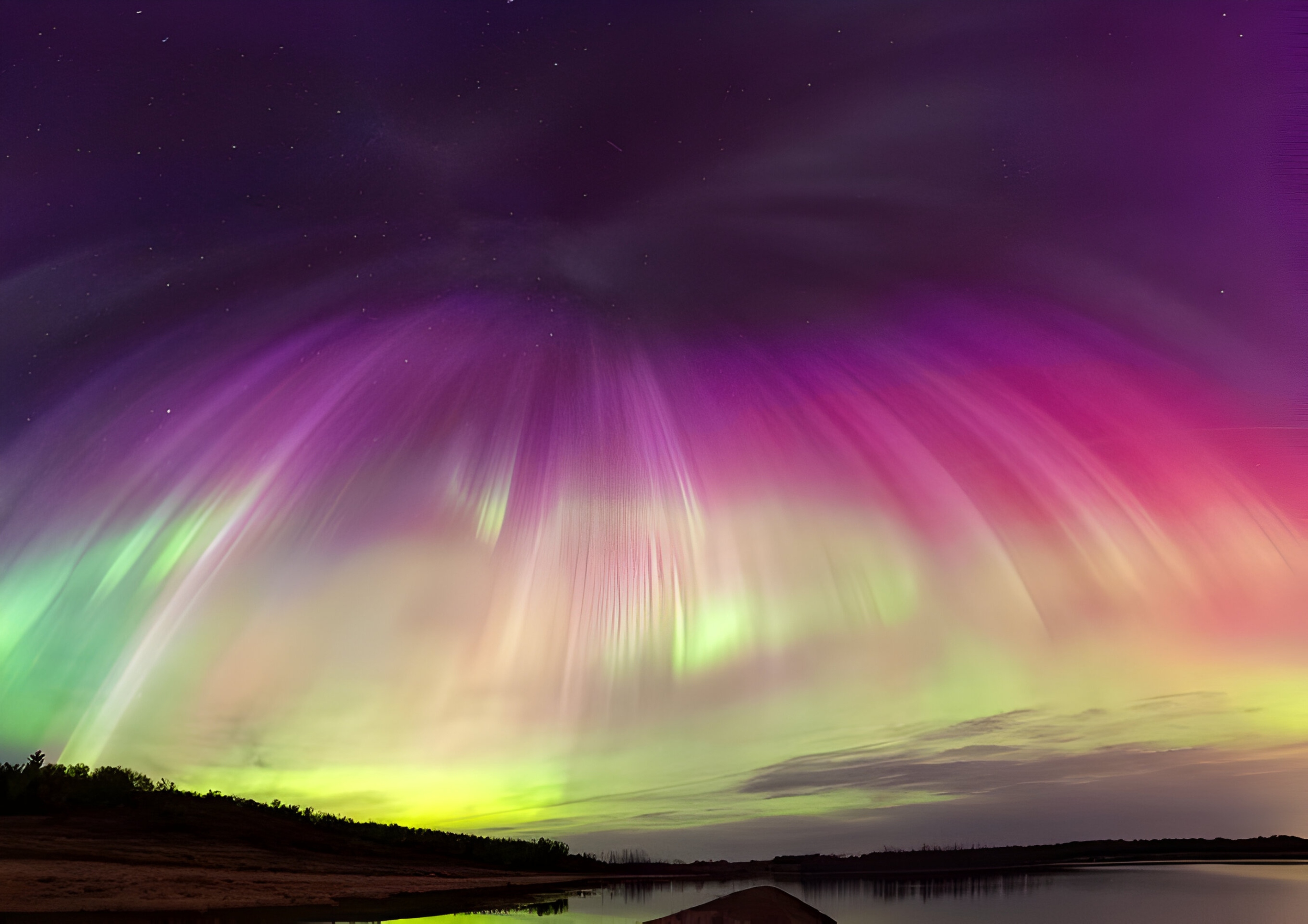Rising carbon dioxide high above Earth is expected to change how geomagnetic storms disturb the upper atmosphere. Peak densities during storms may be lower than they are today, yet the swing from calm to storm could be greater.
That shift matters for satellite drag, orbital lifetimes, and how operators plan for space weather.
A team led by the U.S. National Science Foundation’s National Center for Atmospheric Research (NSF NCAR) modeled these changes in collaboration with Kyushu University.
The work links long-term atmospheric cooling and thinning to the way future geomagnetic storms will play out aloft.
Climate change reaches space
In the lower atmosphere, added carbon dioxide traps heat. Far above, where molecules are sparse, carbon dioxide sheds heat to space. The result is a colder, less dense upper atmosphere.
A lower baseline density has been expected for decades. The question now is how a powerful storm will lift that thinner air during the event itself.
“The way energy from the Sun affects the atmosphere will change in the future because the background density of the atmosphere is different and that creates a different response,” said NSF NCAR scientist Nicolas Pedatella, the study’s lead author.
“For the satellite industry, this is an especially important question because of the need to design satellites for specific atmospheric conditions.”
Geomagnetic storms across decades
The researchers used the May 10 to 11, 2024, geomagnetic superstorm as their test case. They asked how an identical storm would have perturbed the upper atmosphere in 2016 and how it might do so near future solar minima in 2040, 2061, and 2084.
They ran the Community Earth System Model-Whole Atmosphere Community Climate Model with a thermosphere-ionosphere extension.
The system spans from the surface to the upper thermosphere, roughly 310 to 435 miles above Earth. That range allows greenhouse gas-driven changes in the lower atmosphere to extend into the satellite-flying zone.
The simulations were executed on the Derecho supercomputer at the NSF NCAR–Wyoming Supercomputing Center.
Future storms show sharper jumps
Later this century, at the height of a storm comparable to May 2024, parts of the upper atmosphere are projected to be 20 to 50 percent less dense than at the peak of a similar storm today. That is the absolute picture.
The relative picture looks different. Because the calm-time density will be lower, the same storm will produce a larger proportional jump.
A storm that now more than doubles density at the peak may nearly triple it in the future. The atmosphere will not get as dense in absolute terms, but the surge from baseline to peak will be sharper.
Space weather alters satellite plans
Drag depends on both density and speed. In a thinner average atmosphere, satellites tend to last longer before reentry.
But sharp, multiday spikes in drag during big storms can scramble orbits, accelerate decay, and complicate collision avoidance.
Designers and operators will have to plan for a world where the calm is calmer and the jolts are more abrupt. This could affect fuel margins, attitude control, and the cadence of orbit maintenance. It may also influence how constellations prepare for severe space weather events.
Dependence on the upper atmosphere
Navigation, communications, Earth observation, and national security all rely on satellites traversing the thermosphere.
As launch costs fall and constellations multiply, small changes in drag statistics can cascade into large operational impacts.
The findings add to prior estimates of long-term atmospheric thinning by focusing on the storm-time response. The signal is clear: background change reshapes the storm itself.
Future of geomagnetic storm modeling
Pedatella stressed the need to explore different storm types and timings across the 11-year solar cycle. Background density varies with solar activity, which may further modulate the effect.
“We now have the capability with our models to explore the very complex interconnections between the lower and upper atmosphere,” he said. “It’s critical to know how these changes will occur because they have profound ramifications for our atmosphere.”
Future studies will test other drivers, cross-check with satellite drag observations, and refine forecasts that tie climate trends to space weather risk.
For the satellite industry, the message is practical. Account for long-term cooling aloft, and expect future storms to deliver bigger relative jolts, even as the air grows thinner on average.
The study is published in the journal Geophysical Research Letters.
Image Credit: NASA Earth Observatory
—–
Like what you read? Subscribe to our newsletter for engaging articles, exclusive content, and the latest updates.
Check us out on EarthSnap, a free app brought to you by Eric Ralls and Earth.com.
—–
